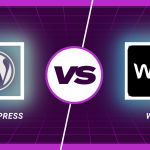Managing documents efficiently is essential in both personal and professional settings. With the total volume of digital files we handle daily, keeping everything organized, secure, and easily accessible can be challenging. That’s where document management software (DMS) comes in. These tools help you store, manage, and recover files effortlessly, offering collaboration, security, and automation features. Whether you’re a freelancer, small business owner, or part of a large organization, the right DMS can streamline your workflow, improve productivity, and eliminate the stress of lost or disorganized files. But with so many options available, how do you choose the best one? This guide will walk you through the 10 best software for document management solutions helping you find the perfect fit for your needs. 
What is Document Management Software?
In today’s digital world, handling and organizing documents efficiently is crucial. Whether you’re running a business, freelancing, or just trying to declutter your personal files, document management software (DMS) is a game-changer. It helps you store, manage, and retrieve files easily while ensuring security and accessibility.
A Document Management Software (DMS) centralizes all your documents in a structured system, making it easier to categorize, search, and collaborate on files. It eliminates the need for physical storage, reduces paperwork, and enhances workflow efficiency. Many DMS solutions offer features like version control, automated backups, access permissions, and cloud integration, ensuring that your data remains secure and accessible from anywhere. Whether you’re handling client contracts, invoices, or important business reports, a well-implemented DMS can save time, reduce errors, and improve overall productivity
What to Look for in a Document Management Software
Before diving into the best tools, here are some key features you should look for when choosing a DMS:
- Cloud storage: Ensures your documents are accessible from anywhere.
- Collaboration features: Allow multiple users to edit and comment on documents in real-time.
- Security and access control: Protect sensitive data with encryption and user permissions.
- Search and retrieval features: Advanced search functions make finding documents quick and easy.
- Integration with other tools: Seamless compatibility with apps like Google Drive, Dropbox, or Microsoft Office.
- User-friendly interface: Keeps things simple and easy to use.
- Version control: Tracks document changes and allows you to revert to previous versions.
10 Best Software for Document Management
1. Google Drive
Google Drive is a widely used cloud-based document management solution that allows users to store, access, and share files easily. With 15GB of free storage, it provides ample space for documents, images, and other files, making it ideal for individuals, professionals, and businesses. Its smooth integration with Google Docs, Sheets, and Slides enables real-time collaboration without the need for additional software. Users can organize files into folders, set access permissions, and share content via shareable links, ensuring smooth teamwork. Additionally, robust security features like encryption and multi-factor authentication help protect data from unauthorized access.
Key Features of Google Drive:
- Free 15GB storage for documents, images, videos, and more.
- Cloud access to files anytime, anywhere.
- Real-time collaboration with team members.
- Easy file sharing through links or permissions.
- Seamless integration with Google Docs, Sheets, Slides, and third-party apps.
- Advanced security features like encryption and multi-factor authentication.
Steps to Use Google Drive:
- Sign In – Go to Google Drive and log in with your Google account.
- Upload Files – Click on “New” > “File Upload” or “Folder Upload” to add your files.
- Organize Files – Create folders and move files for better organization.
- Edit & Collaborate – Open files with Google Docs, Sheets, or Slides and collaborate in real time.
- Share Files – Right-click on a file, select “Share,” and set permissions (Viewer, Commenter, or Editor).
- Access Anywhere – Install the Google Drive app on mobile or desktop for easy access
2. Microsoft OneDrive
Microsoft OneDrive is a cloud-based storage solution that seamlessly integrates with Microsoft 365, making it an excellent choice for businesses and individuals who use Word, Excel, PowerPoint, and other Microsoft applications. It allows users to store, access, and share files from any device, ensuring seamless collaboration across teams. With 5GB of free storage (with options to upgrade for more space), OneDrive provides a secure platform for file management. Users can upload files, create and edit documents, and collaborate in real time, making it a powerful tool for productivity. Additionally, its robust security features, including file encryption and ransomware detection, help protect important data from cyber threats.
Key Features of Microsoft OneDrive:
- 5GB of free cloud storage (with paid plans for additional space).
- Seamless integration with Microsoft Word, Excel, PowerPoint, and other apps.
- Cloud access for storing and retrieving files from anywhere.
- Real-time collaboration and file sharing with team members.
- Version history to track and restore previous file versions.
- Advanced security features like encryption and ransomware detection.
Steps to Use Microsoft OneDrive:
- Sign In – Visit OneDrive and log in with your Microsoft account.
- Upload Files – Click on “Upload” to add documents, images, or videos.
- Organize Files – Create folders and arrange files for easy access.
- Edit & Collaborate – Open and edit files using Microsoft 365 apps like Word, Excel, and PowerPoint.
- Share Files – Right-click a file, select “Share,” and set access permissions (View, Edit, or Collaborate).
- Access Anywhere – Download the OneDrive app on your mobile or desktop for instant access.
3. Dropbox
Dropbox is a well-known cloud storage and file-sharing solution that offers automatic file syncing, backup features, and seamless collaboration. It is widely used by businesses and individuals for secure file storage and easy access across multiple devices. Dropbox integrates with popular productivity tools like Slack, Zoom, and Microsoft 365, enhancing teamwork and workflow efficiency. Users can collaborate using Dropbox Paper, a built-in tool for document creation and editing. With its simple interface, strong security measures, and flexible sharing options, Dropbox is an excellent choice for file organization, backup, and team collaboration.
Key Features of Dropbox:
- Automatic file syncing and cloud backup for secure storage.
- Integration with tools like Slack, Zoom, and Microsoft 365.
- Collaboration features with Dropbox Paper for document editing.
- File version history to restore previous versions.
- Advanced security with encryption and two-factor authentication.
- Seamless file sharing with customizable access permissions.
Steps to Use Dropbox:
- Install the Dropbox App – Download it from Dropbox and sign in with your account.
- Upload & Organize Files – Drag and drop files into Dropbox or create folders for better organization.
- Sync Across Devices – Enable file syncing to access documents from any device.
- Edit & Collaborate – Use Dropbox Paper for document collaboration or integrate with third-party apps.
- Share Files – Generate shareable links or invite team members with specific access permissions.
- Access Anytime, Anywhere – Use the web, mobile, or desktop app to manage your files on the go
4. Evernote
Evernote is a powerful document management and note-taking system that goes beyond simple text storage. It allows users to scan, digitize, and organize documents, making it an excellent tool for professionals, students, and businesses. With features like tags and notebooks, users can efficiently categorize their files for easy retrieval. Evernote’s advanced search capabilities enable users to find notes quickly, even within handwritten documents, images, and PDFs. Additionally, it syncs across multiple devices, ensuring access to important information anytime, anywhere. Whether for capturing ideas, organizing documents, or managing research, Evernote is a versatile and efficient productivity tool.
Key Features of Evernote:
- Scan and digitize handwritten notes, receipts, and documents.
- Organize files using tags and notebooks for quick access.
- Powerful search functionality, even within images and PDFs.
- Syncs across multiple devices for easy access anywhere.
- Integration with apps like Google Drive, Slack, and Outlook.
- Allows adding audio recordings, to-do lists, and web clippings.
Steps to Use Evernote:
- Install the Evernote App – Download from Evernote and sign in.
- Create & Organize Notes – Use notebooks and tags to categorize notes.
- Scan & Digitize Documents – Use the built-in scanner to save handwritten notes, receipts, or PDFs.
- Search & Retrieve Notes – Easily find notes using keywords, tags, or content within images and PDFs.
- Sync Across Devices – Enable cloud sync for seamless access from desktop, mobile, or tablet.
- Share & Collaborate – Share notes with team members or integrate with third-party apps.
5. Zoho Docs
Zoho Docs is a cost-effective cloud storage and document management solution designed for businesses and professionals. It offers file storage, editing, and real-time collaboration tools, making it a strong alternative to Google Drive and Microsoft OneDrive. With built-in file sharing and version control, users can track document changes and maintain updated records effortlessly. Zoho Docs also integrates seamlessly with Zoho’s business suite, providing additional tools for productivity and workflow management. Its budget-friendly pricing and business-oriented features make it an ideal choice for organizations looking for a secure and efficient document management system.
Key Features of Zoho Docs:
- Cloud-based file storage with secure access from any device.
- Real-time collaboration with team members on documents.
- File sharing and version control to track document history.
- Seamless integration with Zoho’s business suite (Zoho Mail, Zoho Projects, etc.).
- Advanced security features like encryption and role-based permissions.
- Affordable pricing, making it a great alternative to Google Drive and OneDrive.
Steps to Use Zoho Docs:
- Sign Up – Visit Zoho Docs and create an account.
- Upload & Organize Files – Add documents and arrange them into folders.
- Edit & Collaborate – Use Zoho Writer, Sheet, and Show to work on files in real-time.
- Share Documents – Set access permissions and share files securely.
- Track Changes with Version Control – Restore previous file versions when needed.
- Access Anytime, Anywhere – Use the web or mobile app for seamless document management.
6. M-Files
M-Files is an AI-driven document management system designed to enhance efficiency by automatically categorizing files based on their content. Unlike traditional folder-based storage, M-Files uses metadata and AI-powered automation to organize documents, reducing manual work and improving accessibility. Its advanced search features allow users to quickly locate files without navigating complex folder structures. With automated workflows and version control, businesses can streamline document handling and ensure data security. M-Files is especially beneficial for large organizations managing high volumes of documents, offering a smart, scalable, and secure document management solution.
Key Features of M-Files:
- AI-powered document classification for automated organization.
- Advanced search functionality to find files without navigating folders.
- Automated workflows to reduce repetitive tasks and manual data entry.
- Version control to track and restore previous document edits.
- Enterprise-level security with role-based access control.
- Seamless integration with Microsoft 365, Google Workspace, and CRM tools.
Steps to Use M-Files:
- Sign Up & Install – Visit M-Files and create an account.
- Upload Documents – Add files, and the AI will automatically classify and tag them.
- Search & Retrieve – Use metadata-based search for quick file access.
- Automate Workflows – Set up automated approval processes and document handling.
- Control Access & Permissions – Assign user roles to ensure document security.
- Integrate with Other Tools – Connect M-Files with Microsoft 365, Google Workspace, or CRM platforms.
7. PandaDoc
PandaDoc is a dedicated document management system designed for handling contracts, agreements, and proposals efficiently. It simplifies the entire contract lifecycle, from creation to approval, with electronic signatures and contract automation. Businesses can use document analytics and tracking to monitor recipient engagement and streamline approvals with automated workflows. With its intuitive interface, secure cloud storage, and integration with CRM tools, PandaDoc is an ideal solution for organizations dealing with contracts regularly.
Key Features of PandaDoc:
- Electronic signatures for fast and secure contract approvals.
- Automated contract workflows to streamline document processing.
- Real-time document tracking to monitor recipient engagement.
- Customizable templates for contracts, proposals, and agreements.
- Integration with CRM and business tools like Salesforce and HubSpot.
Steps to Use PandaDoc:
- Sign Up – Visit PandaDoc and create an account.
- Create or Upload a Document – Use pre-designed templates or upload your file.
- Add Electronic Signatures – Insert legally binding e-signatures for contracts.
- Set Up Approval Workflows – Automate contract approvals and send documents to the right stakeholders.
- Track Document Engagement – Monitor when recipients view, sign, or interact with the document.
- Store & Manage Contracts – Securely save signed agreements for future reference.
8. eFileCabinet
eFileCabinet is a robust document management system designed for industries with strict regulatory requirements, such as healthcare, finance, and legal sectors. It provides secure document storage, role-based access controls, and automated workflows, ensuring compliance with industry regulations. With its advanced security measures, businesses can protect sensitive data while streamlining document handling. eFileCabinet’s automation features reduce manual processes, improving efficiency and organization. Its cloud-based and on-premise solutions make it a flexible and secure choice for businesses managing confidential documents. Key Features of eFileCabinet:
- Role-based access controls to restrict file access securely.
- Encrypted document storage for enhanced data protection.
- Automated workflows to streamline document approvals and processes.
- Audit trails & compliance tracking for regulatory adherence.
- Integration with third-party applications like Microsoft 365 and QuickBooks.
- Cloud and on-premise deployment options for flexible accessibility.
Steps to Use eFileCabinet:
- Sign Up & Install – Visit eFileCabinet and set up an account.
- Upload & Organize Documents – Store files securely and categorize them efficiently.
- Set Role-Based Access – Assign permissions to ensure authorized access only.
- Automate Workflows – Configure automated processes for approvals and document routing.
- Track & Monitor Compliance – Use audit trails to maintain regulatory standards.
- Access Files Securely – Retrieve documents from the cloud or on-premise storage anytime.
9. Templafy
Templafy is a comprehensive document management system designed to help businesses create, manage, and distribute branded templates efficiently. It ensures that employees always use on-brand, up-to-date materials, maintaining brand consistency across all documents. With corporate template management, brand compliance controls, and centralized document distribution, Templafy simplifies document creation for large organizations. Automating template updates and enforcing brand guidelines, helps businesses improve efficiency, compliance, and professionalism in their documentation.
Key Features of Templafy:
- Corporate template management to standardize document creation.
- Brand compliance controls to ensure uniformity across all materials.
- Centralized document distribution for easy access to updated files.
- Automated content updates to keep templates current.
- Integration with Microsoft Office, Google Workspace, and CRM tools.
- Cloud-based access for seamless use across teams and locations.
Steps to Use Templafy:
- Sign Up & Set Up – Visit Templafy and create an account.
- Upload & Manage Templates – Store branded templates in a central location.
- Ensure Brand Compliance – Set rules to maintain consistency in document creation.
- Distribute Updated Documents – Share templates with employees across the organization.
- Automate Content Updates – Ensure all documents stay up to date with automated changes.
- Integrate with Existing Tools – Connect with Microsoft Office, Google Workspace, and CRM platforms.
10. OpenText Documentum
OpenText Documentum is a powerful enterprise-grade document management system designed for organizations that require strict document governance, security, and compliance. It offers automated workflows for approvals and audits, ensuring efficient document processing while maintaining regulatory compliance. With advanced security settings and scalable architecture, Documentum is ideal for large enterprises managing vast amounts of sensitive data. Its automation and governance capabilities make it a trusted solution for industries with complex compliance requirements, such as finance, healthcare, and government sectors.
Key Features of OpenText Documentum:
- Automated workflows for approvals, audits, and compliance tracking.
- Advanced security settings to protect sensitive documents.
- Scalability to support large enterprises with broad data needs.
- Version control and document tracking for efficient record-keeping.
- Regulatory compliance management to meet industry standards.
- Integration with enterprise applications like ERP and CRM systems.
Steps to Use OpenText Documentum:
- Sign Up & Deploy – Visit OpenText Documentum and choose a deployment option (cloud or on-premise).
- Upload & Organize Documents – Store files securely with metadata tagging.
- Set Up Automated Workflows – Automate approvals, audits, and compliance processes.
- Implement Security Controls – Configure access permissions and encryption settings.
- Monitor & Track Documents – Use version control to manage edits and history.
- Ensure Compliance – Maintain regulatory standards with audit trails and reports.

Making the Best Choice for Your Document Management Needs
Choosing the best software for document management depends on your specific needs, whether for personal use, business operations, or contract management. Individuals looking for a simple and efficient way to store and organize files can benefit from Google Drive or Evernote, both offering cloud-based accessibility and easy document retrieval. For small businesses, Zoho Docs and Dropbox provide cost-effective solutions with secure file sharing and team collaboration features.
Enterprises requiring advanced document governance and compliance should consider OpenText Documentum or Templafy, which offers robust security measures, workflow automation, and seamless integration with business applications. Meanwhile, businesses dealing with frequent contract approvals and legal agreements can streamline their processes with PandaDoc, a platform designed for efficient contract creation, e-signatures, and approval workflows.
Interesting Reads:
7 Comprehensive WordPress Backup Solutions You Should Know About
16 Widely Used AI Tools To Improve Your Productivity
Marketing Trends For Your Business Growth
Last modified: March 18, 2025


